Better Money Technology for Institutions
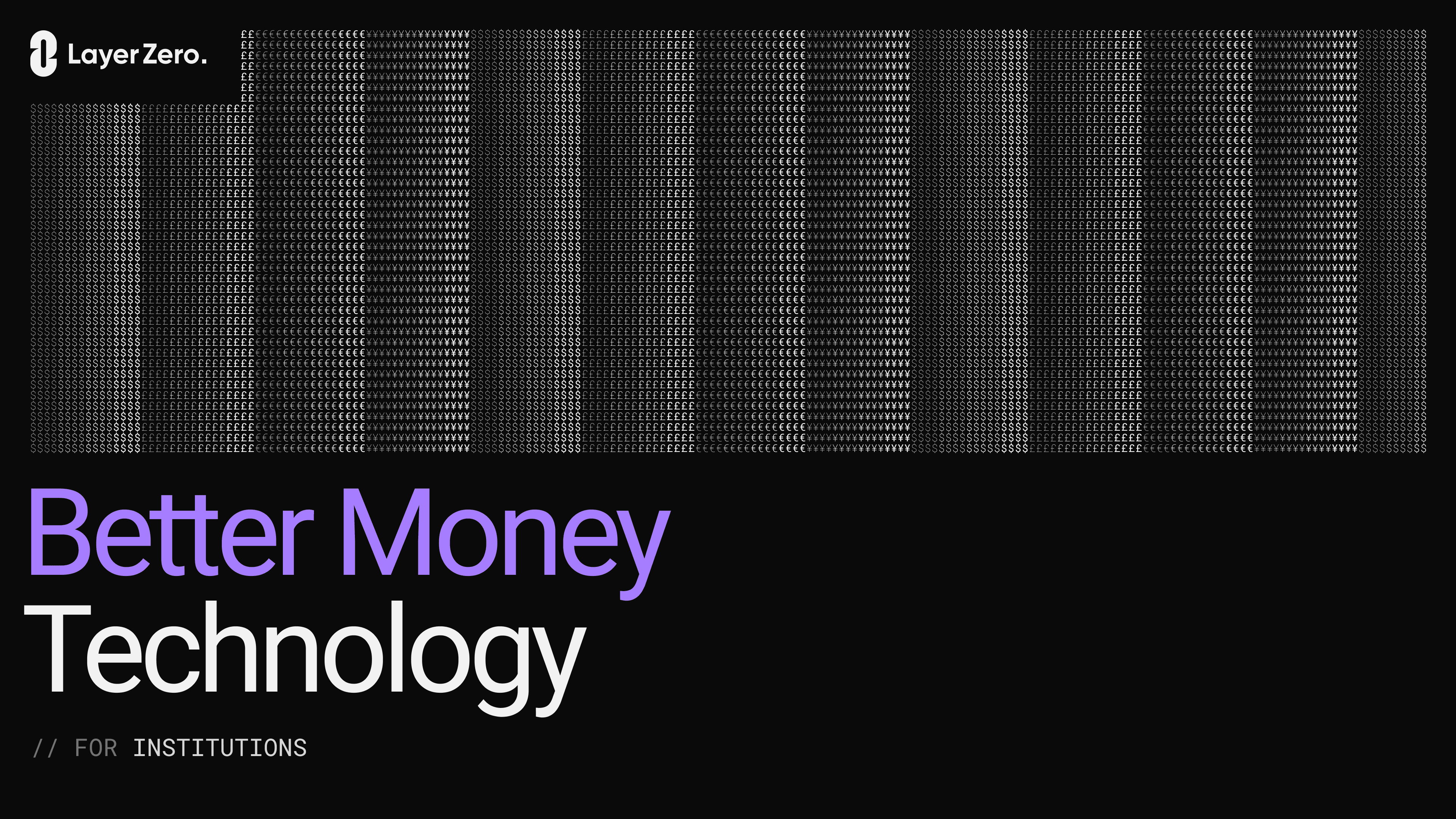
Any Asset, Any Blockchain, Your Security
For decades, financial institutions have relied on a patchwork of systems to trade and settle money and assets. Each transaction, whether a cross-border payment or a security settlement, often involves a complex web of protocols and intermediaries. Tokenization, while promising, risks creating a new version of this problem: fragmented digital liquidity islands where assets are trapped on individual blockchains.
The global financial system cannot afford to repeat the fragmentation of the past. For digital assets to fulfill their potential, institutions require Better Money Technology to support the issuance and distribution of regulated onchain monies and assets across every blockchain.
Better Money Technology
Better Money Technology is defined by three attributes:
- Borderless: accessible to all eligible participants, unconstrained by geography.
- Programmable: efficient, cost-effective, and enforceable in code.
- Universal: compatible with all asset classes and blockchains
For institutions, these attributes translate directly into global reach, automated compliance, and universal systems – the same pillars modern financial infrastructure aspires to.
The rapid ascent of stablecoins – surpassing $300 billion in market capitalization in 2025 – demonstrates proven demand for borderless, programmable value via tokenized dollars. Yet the third attribute remains unresolved. Blockchains remain closed systems, unable to reconcile external states due to communication constraints, and therefore fragmenting liquidity and applications. This is the onchain equivalent of jurisdictional silos in banking. A dollar on one ledger should be equivalent to a dollar on another: today, that parity is neither natural nor guaranteed on crypto rails.
LayerZero provides the interoperability protocol required to achieve Better Money Technology. It is a universal framework for moving, storing, composing, borrowing, swapping, and lending units of value on every type of blockchain or digital ledger. Any instrument governed by a smart contract – from deposit tokens and stablecoins to bonds, money market funds, or tokenized gold – can be issued and operated seamlessly across blockchains.
Since 2022, LayerZero has secured more than $170 billion in cross-chain value across 150+ blockchains. It is rapidly becoming embedded in financial markets as the foundation for resilient, blockchain-agnostic operations. Where blockchain, singular, is technology for borderless and programmable money, LayerZero ensures global composability for value by making blockchain development universal across blockchain – plural.
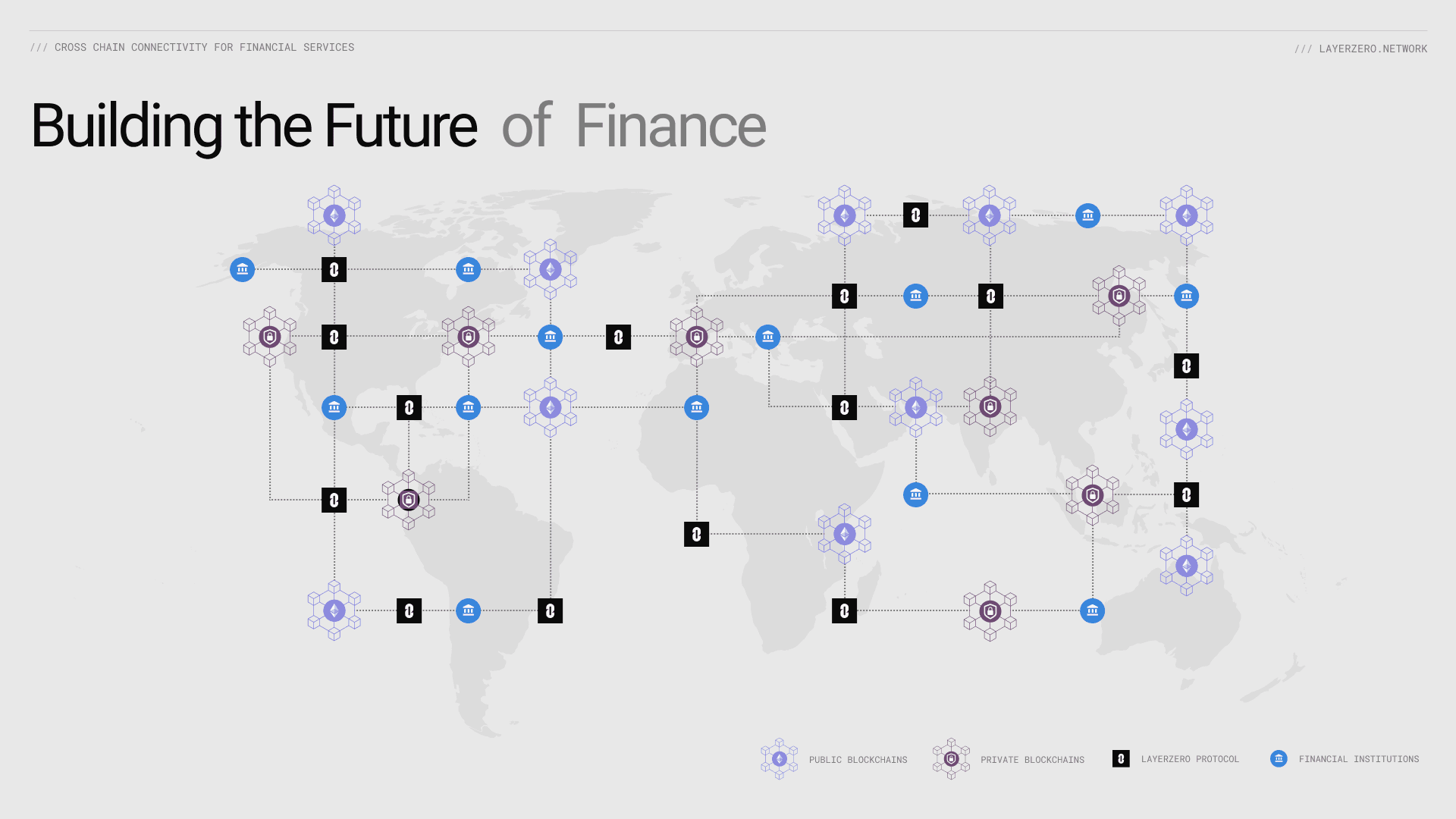
With Better Money Technology now available through LayerZero, the institutionally relevant question is now clear:
How should financial institutions adapt their business models and controls to safeguard clients and preserve competitiveness in an environment of many blockchains?
The answer comes in three parts: tokenize assets and move them on the most efficient rails possible, build applications to gain distribution where demand is signalled, and embed compliant verifiers into smart contracts to automate regulation.
1. Move Value Efficiently (Any Asset)
LayerZero’s Omnichain Fungible Token (OFT) Standard functions as a universal solution for issuing onchain money and assets. It ensures a single, consistent supply for fungible tokens, recognized across EVM and non-EVM environments, permissionless or permissioned blockchains alike.
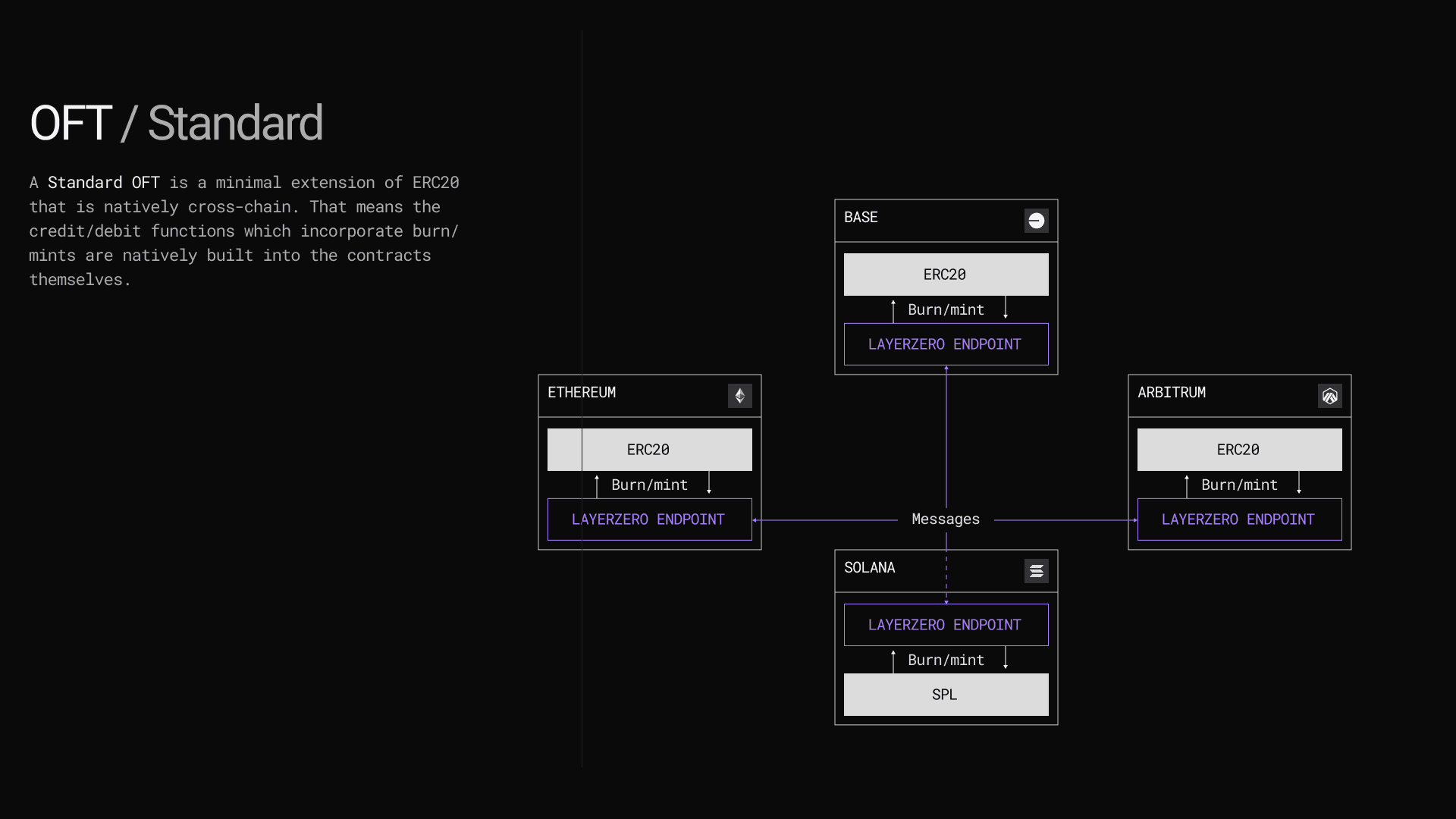
Key attributes of OFTs include:
- Unified supply: asset supply is orchestrated globally across all blockchains an issuer deploys to.
- Universal composability: supports all blockchains, asset types, and smart contracts.
- Full ownership: asset issuers retain control over parameters like gas, fees, and verification options.
- Enterprise-grade controls: asset issuers can implement customized rate limits and sanctions screening.
Transfers using LayerZero’s OFT Standard are facilitated through credit/debit movements across blockchains, enabling 1:1 transfers of unlimited size without liquidity constraints. At the application layer, LayerZero can support advanced functionality, allowing institutions to program FX-like swaps (e.g., USD for EUR stablecoins) or compose more complex instructions, such as sending a stablecoin cross-chain while simultaneously triggering a dividend contract that allocates payments to tokenized equity holders.
Over 500 OFTs representing $90 billion already exist on the LayerZero protocol, including PayPal’s $2.5B PYUSD stablecoin and the State of Wyoming’s FRNT stablecoin. As noted above, the LayerZero protocol is unbiased in the execution of cross-chain payloads, enabling 1:1 transfers via credit/debit movements. Whether transferring $1 or $100 million, the protocol securely delivers messages at the same low cost. For example, this $800M cross-chain stablecoin transfer was performed in 104 seconds for just $1.20 in fees.
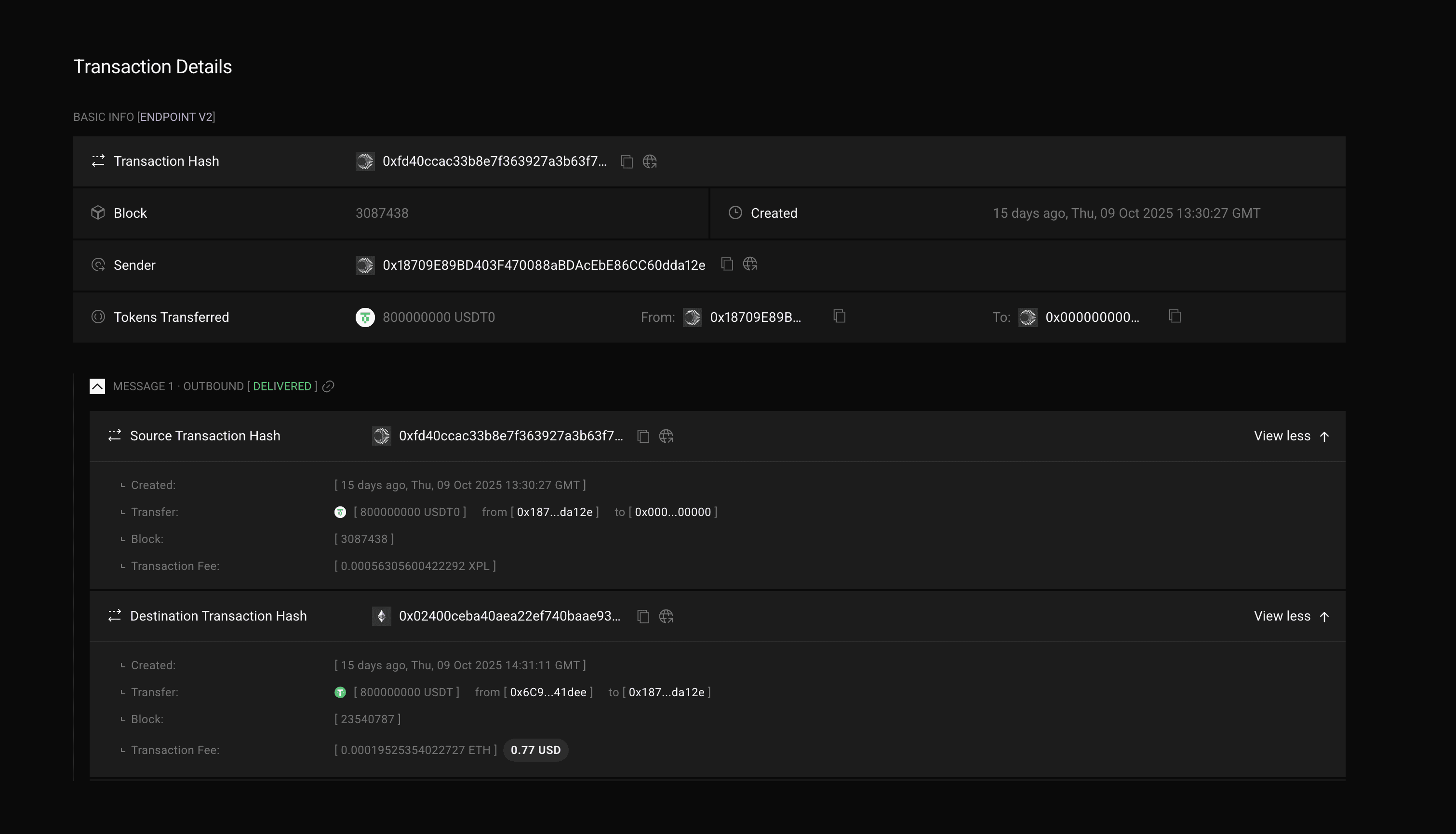
2. Access Customers and Capital Anywhere (Any blockchain)
Omnichain Applications (OApps) allow institutions to build once and deploy on any blockchain, reducing operational costs and broadening market access. Imagine a global asset manager launching a new tokenized fund: instead of building separate versions for Ethereum, Solana, and a private network, they can create a single application that runs seamlessly across them all, reducing technology and maintenance costs. This type of smart contract deployment is a distribution advantage just as much as a technical one. Assets and investors exist across blockchains to meet demand wherever it originates, just as companies exist across borders in the physical economy.
Ondo Finance demonstrates this architecture in practice by using LayerZero to build a suite of products across different blockchains. Its tokenized Treasury product (USDY) with $700M in TVL operates across four blockchains as an OFT, enabling users to buy and hold onchain T-bill yield on many blockchains. In addition, Ondo Global Markets has just launched 100+ tokenized stocks and ETFs on Ethereum. Each token (e.g., AAPLon for Apple shares) tracks the full economic return of its underlying stock, including reinvested dividends (net of applicable tax withholdings). Minting and redeeming via the platform is available 24 hours a day, five days a week (24/5), while tokens are freely transferable and tradable 24/7 on supported blockchains. Each token is fully backed by underlying shares held with one or more regulated U.S. broker-dealers and is mintable and redeemable for KYC-verified users, prioritizing transparency and regulatory compliance.
Notably, Ondo uses LayerZero as its solution for blockchain expansion, enabling these tokenized stocks to be deployed to new blockchains, such as Solana and BNB Chain, without requiring any changes to core contract logic.
A similar approach would also be applicable to money market funds, equity funds, and deposit tokens, with interoperability ensuring that corporate actions, such as redemptions or dividend payments, can be executed uniformly across blockchains, while allowing issuers to retain control of the keys for assets. Below is an example of how a third-party platform could create a multi-asset tokenization product that is compatible with every blockchain LayerZero supports.

Beyond strictly asset or application distribution, institutions must also address capital formation. While most liquidity is still sourced offchain, tokenized assets such as deposits and collateral will increasingly need to move across institutions and blockchains. In these models, collateral can be held while a corresponding debt or receipt token is issued, enabling secured financing and automated settlement.
LayerZero’s OVault framework is a solution for this by acting as a ready-made escrow contract: holding collateral and issuing a universal receipt token, creating a powerful foundation for cross-institutional capital markets that spans blockchains. As shown below, OVault enables smart contracts to accept deposits from any originating blockchain and issue a receipt to any destination blockchain supported by the vault provider. By standardizing how collateral and receipts move between chains, OVault enables intraday settlement, composable lending, and transparent rehypothecation, the same mechanics that underpin modern repo markets, now expressed onchain.
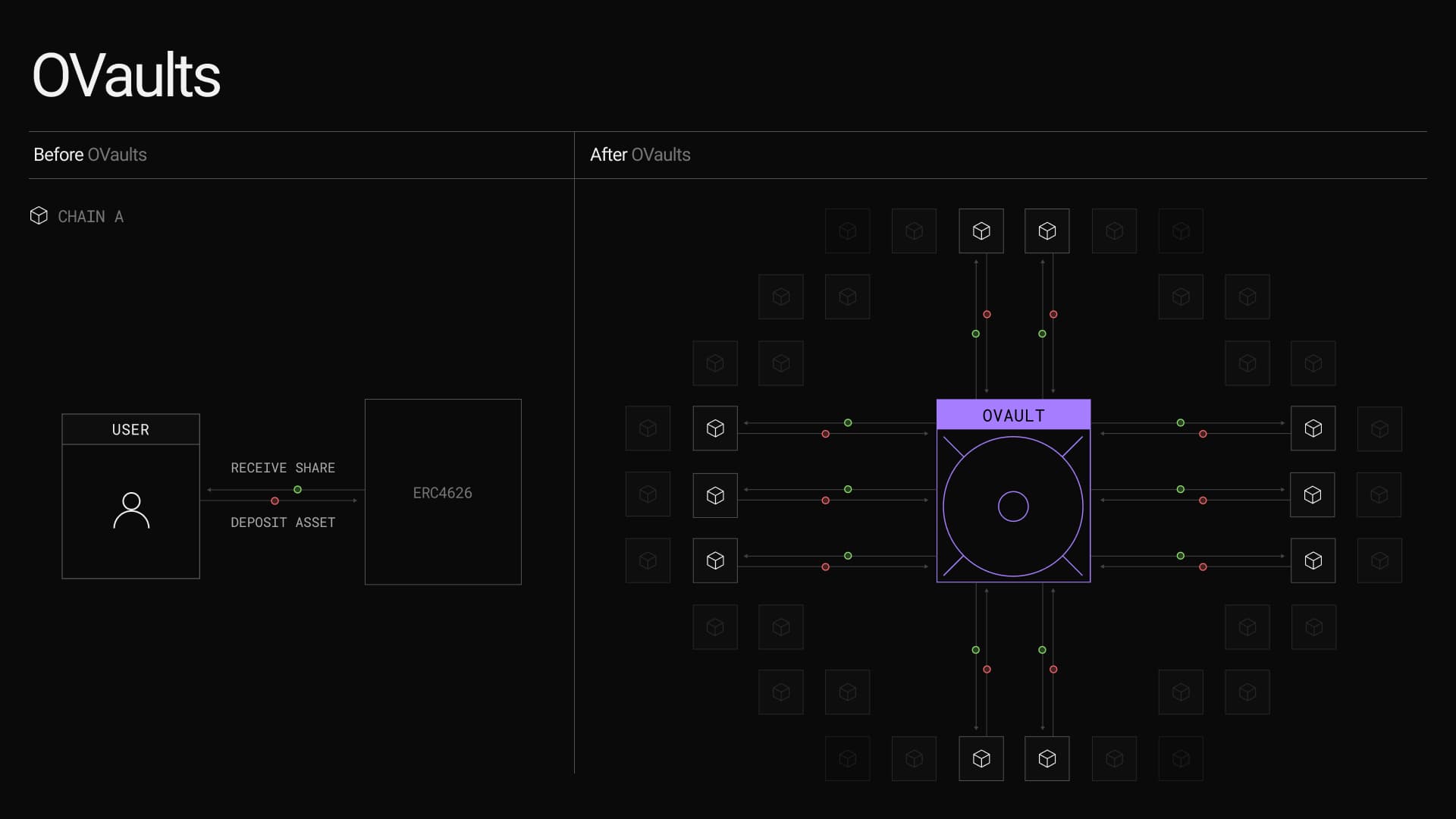
Overall, more protocols, services, and users will continue to come onchain using different blockchains, thus pushing institutions to extend their assets, monies, and business logic to new ledgers regularly. LayerZero eliminates uncertainty by providing access to any blockchain, enabling an institution to deploy an asset or application to any blockchain of its choice – while also giving them the authority to unwire or disconnect if and when necessary.
3. Build Custom Security Stacks (Your Security)
Sovereignty over your application’s security matters. LayerZero’s architecture prioritizes developer control over smart contract security and transaction verification, while ensuring that the core protocol remains immutable. Where traditional bridges centralize validation, introducing custodial, governance, and liveness risks, LayerZero instead separates message delivery from verification, allowing builders to construct their own Security Stack using their preferred set of Decentralized Verifier Networks (DVNs) to verify each transaction.
Running a DVN is a permissionless role, available to any entity that can attest to the validity of a cross-chain transaction. A DVN may be self-hosted, federated across independent providers, or a hybrid, with configurable quorum signing thresholds and escalation by transaction type and size or jurisdiction. By giving institutions the ability to select DVNs, they retain control over:
- Who verifies each transaction
- How verification occurs
Today, institutions can configure custom Security Stacks with X-of-Y-of-N signing thresholds from a roster of 50+ independent DVNs such as Google Cloud, Deutsche Telekom – or build their own, granting transparent governance consistent with, for example, PFMI Principle 2. Policies for KYC, AML, and sanctions screening are defined by each individual institution. For instance, each PYUSD transfer is validated by a Paxos-hosted DVN that meets their security standards.
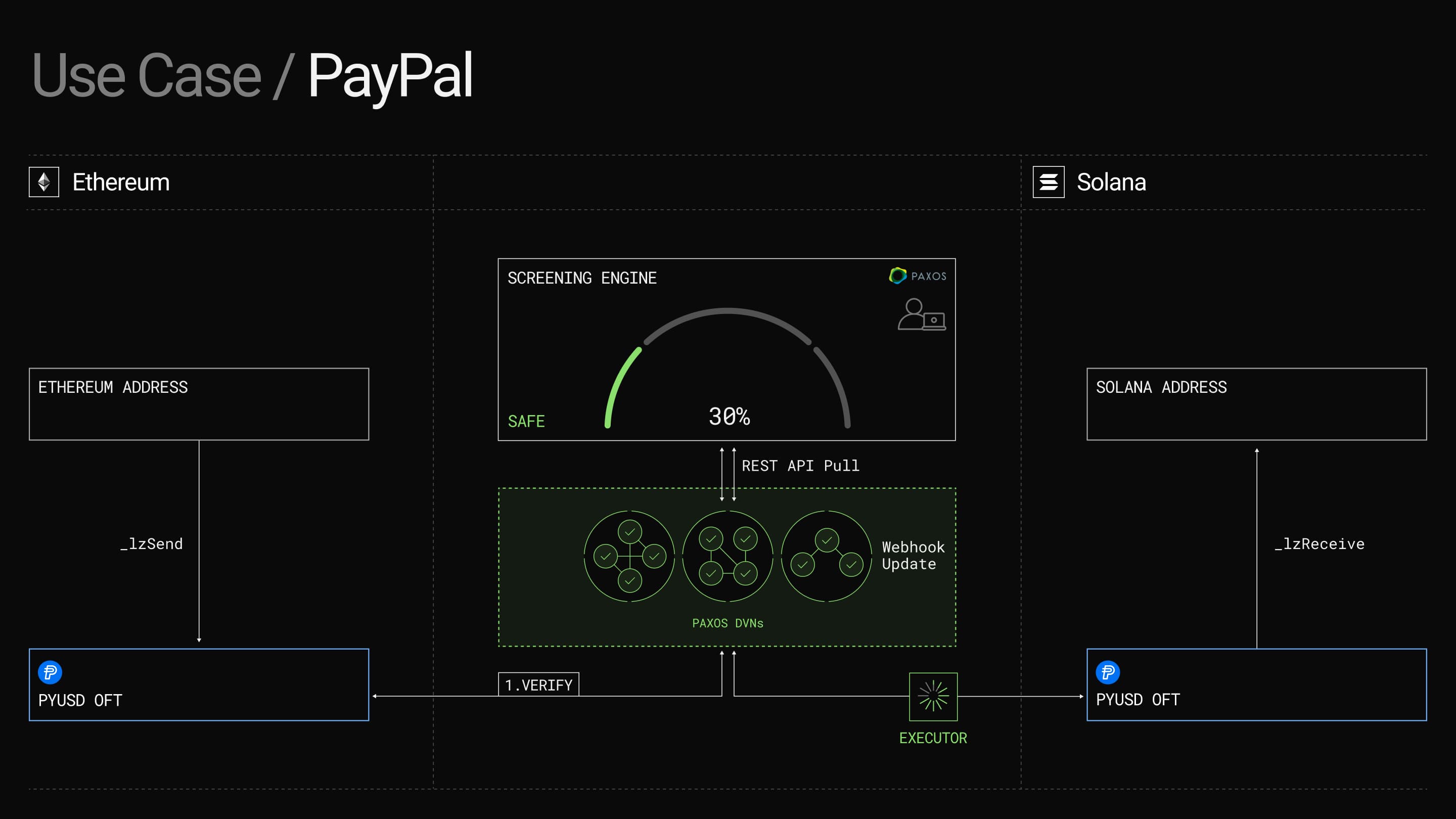
As the industry continues to grow, there is likely room for application-specific DVNs tailored to regional or sectoral regulatory frameworks, and for custom verifiers leveraging high-speed attestation to verify transactions faster than the chain itself. For instance, a DVN may come to market as a MiCA-compliant solution or NYDFS-compliant solution. A DVN could also embed compliance enforcement — from KYC/AML checks and sanctions list screening to Travel Rule metadata validation — ensuring regulatory obligations are verified prior to message settlement.
Institutions can also adjust their Security Stack to accommodate varying thresholds, such as the value transferred, trading counterparty, blockchain pathway, or asset type.
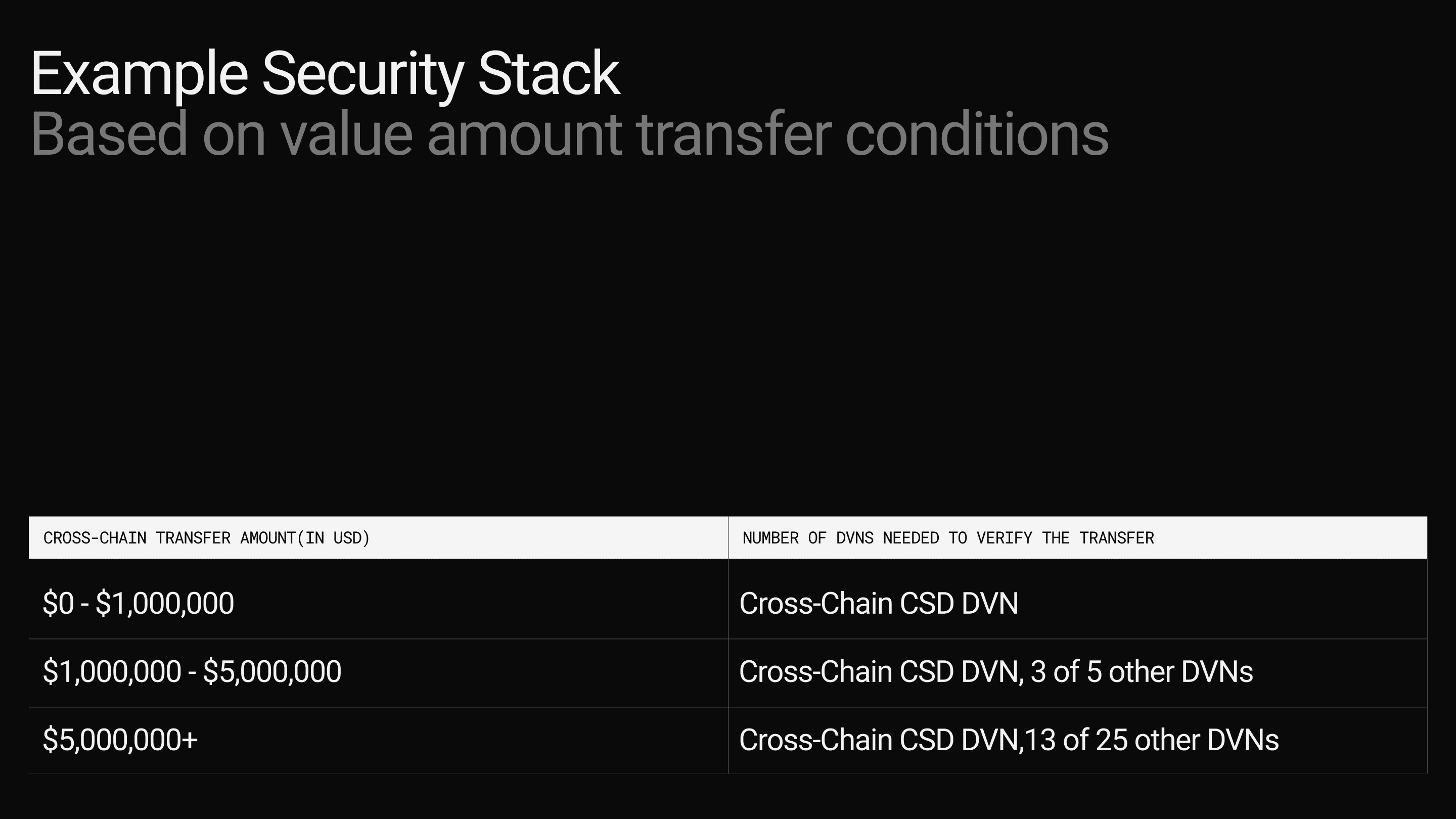
The Future Financial Infrastructure: The Institutional Path Forward
This rewiring of the financial infrastructure through blockchains is creating an environment where existing market participants could capitalize on and extend their core functions: move value more efficiently than ever before, distribute applications across digital borders, and embed customized security into crypto-native products.
For example:
- A CSD could maintain a golden record of tokenized equities while distributing settlement and dividend instructions across blockchains with minimal overhead.
- A transfer agent could manage fund subscriptions and redemptions by operating one shareholder registry and broadcasting corporate actions across blockchains.
Just as TCP/IP enabled information exchange without privileging a single network, LayerZero provides the “plumbing” for value: unopinionated about the packet and unopinionated about the ledger. For financial institutions, the benefits are clear:
- Innovate Faster: Issue tokenized assets and instructions across blockchains without re-engineering per ledger.
- Scale Efficiently: Access capital and customers across blockchains with lower total cost of ownership and maintenance.
- Embed Compliance: Integrate verification and risk controls into transaction workflows.
The future will not be governed by one blockchain. Financial institutions and market structures need resilient infrastructure to deploy any asset, on any blockchain, under security assumptions they control. The LayerZero protocol represents a critical architecture for a resilient, cross-chain financial system that can operate at scale on ideas like those outlined above.
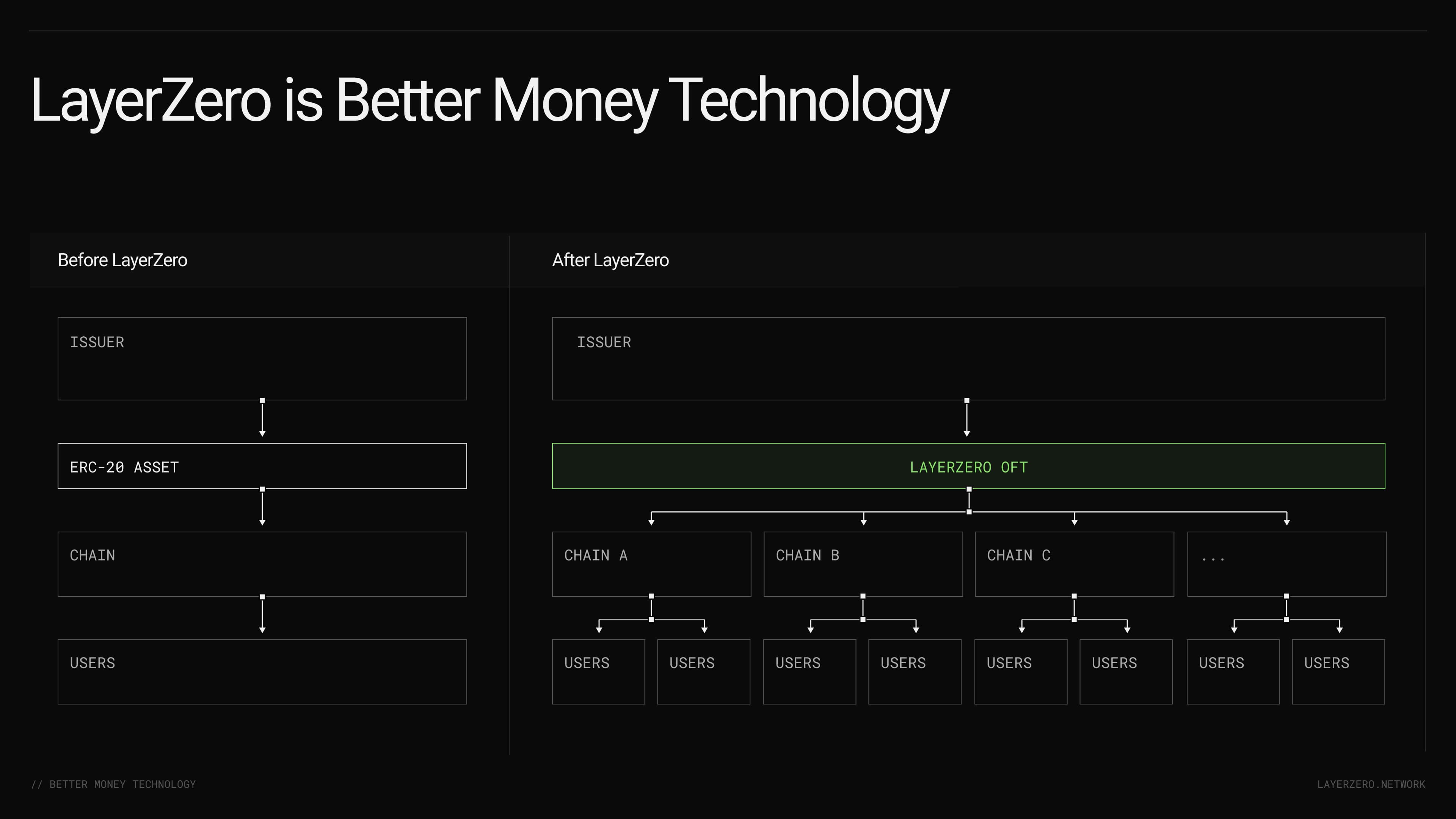
Yet this is only the starting point. What will ultimately matter is how institutions leverage that technology – to design infrastructure that evolves their business models, strengthens customer trust, and turns tokenization into a competitive advantage.
In a world where blockchain-native assets are becoming core to money and markets, better money technology is no longer optional; it is borderless, programmable, and, now, universal.
About the author: Cameron Nili is the Financial Services Lead at the LayerZero Foundation. He previously served as an Executive Fellow at the World Economic Forum’s Center for Financial and Monetary Systems and as a Senior Manager in Accenture’s Banking and Capital Markets group.